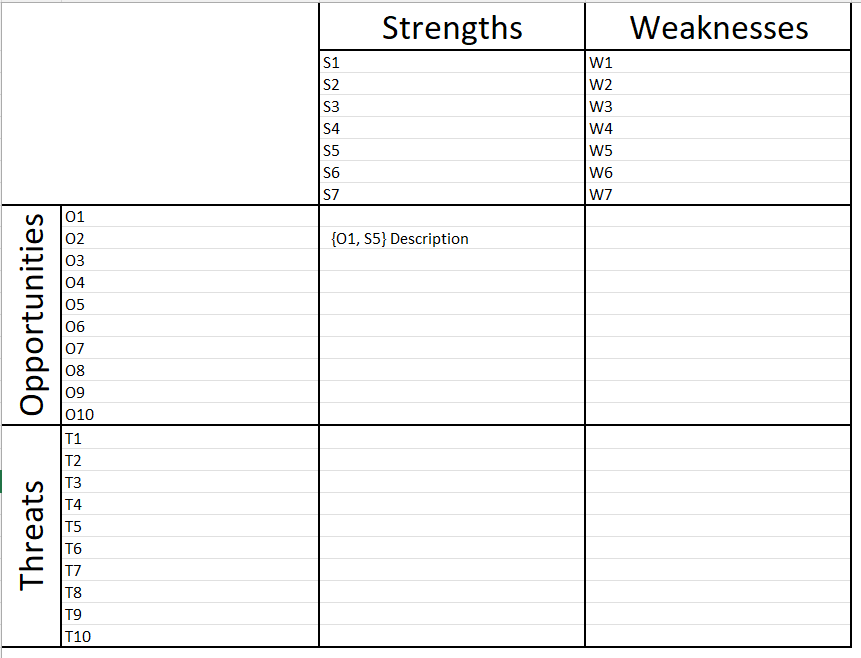A SWOT analysis is a great tool to understand your operating environment. However, misusing this tool can – at best – prove to be useless. This post is a quick introduction to the SWOT, how to use it, and how to get the most out of it!
If you’re reading this post, you’re probably familiar with the SWOT. However, SWOT stands for Strengths, Weaknesses, Opportunities, and Threats. This seemingly quick and simple tool is all-too-often misused. There are a few common mistakes we’ll hit here, followed by some examples.
Misunderstanding the SWOT Terms
- Strengths – These are internal things your organization does well. For example, “We have top talent” is a strength.
- Weaknesses – Weaknesses are internal things your organization does NOT do well. For example, “We are undercapitalized for current projects”.
- Opportunities – These are opportunities that EVERYONE you’re concerned with has access to, such as “Interest rates decreased by .25 points”. Notice this is applicable to everyone in my industry, not just me!
- Threats – Like opportunities, these are threats that apply to everyone in the industry. Using the preceding example, an increase in interest rates may be seen as a threat.
Using incomplete or ill-conceived data
Where did you get your SWOT data from? If your answer is any form of “group think”, you have a problem… If you completed your SWOT by yourself, you have a problem. If you finished the SWOT in an hour, you have a problem!
Then where DO we get the data from? Use one of the standard Internal/External Analysis tools such as the Internal Factor Evaluation and External Factor Evaluation.
Stopping before analysis happens!
Read carefully: Filling out a template is not an analysis! The following template is the general form that everyone has seen before, but I’ve added a numbering scheme to it (you’ll see why next).

This is a good start but what does it really tell you? There are a few things we can glean from this, but it’s very basic stuff like “we have more threats than weaknesses and that’s bad.” That’s always good information to have, of course, but it’s relatively weak if you want to really understand your business environment.
So what do we really want to get out of a SWOT analysis? We want STRATEGIC ALTERNATIVES! In other words, we want to generate a list of possible ideas to use internal and external factors to our advantage. By modifying the above template, we can get a much more useable matrix.

By matching rows to columns, you can derive up with the following strategies:
- S-O Strategies – Using Strengths to capitalize on Opportunities
- S-T Strategies – Using Strengths to mitigate industry threats
- W-O Strategies – Overcome weaknesses using industry Opportunities
- W-T Strategies – These are defensive strategies to mitigate industry threats in light of internal weaknesses.
The idea here isn’t to come up with all home-run strategies! This is the time to match Internal and External factors to come up with a list of possible alternatives. The next step is to trim that list down and make selections based on other tools like the QSPM.